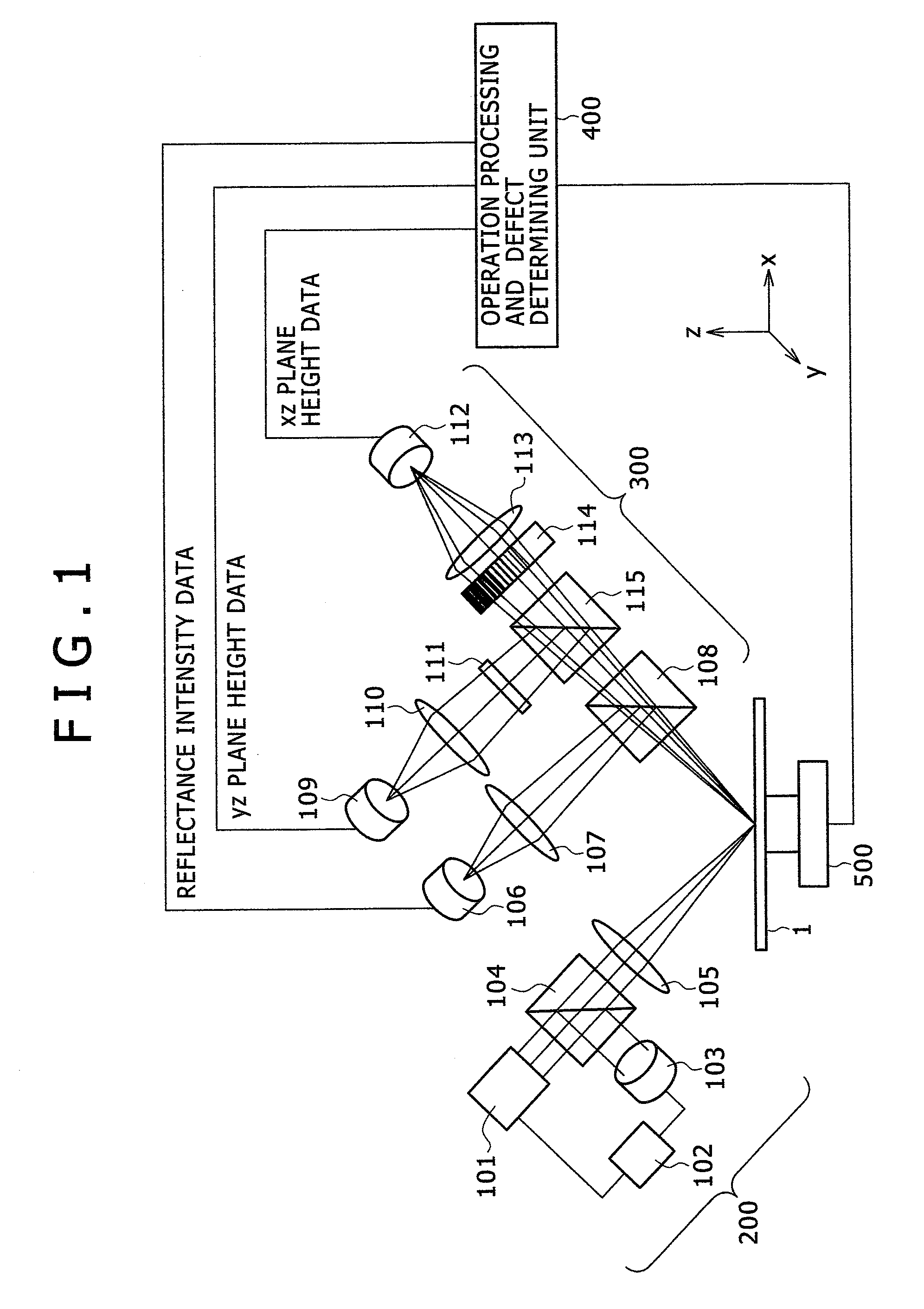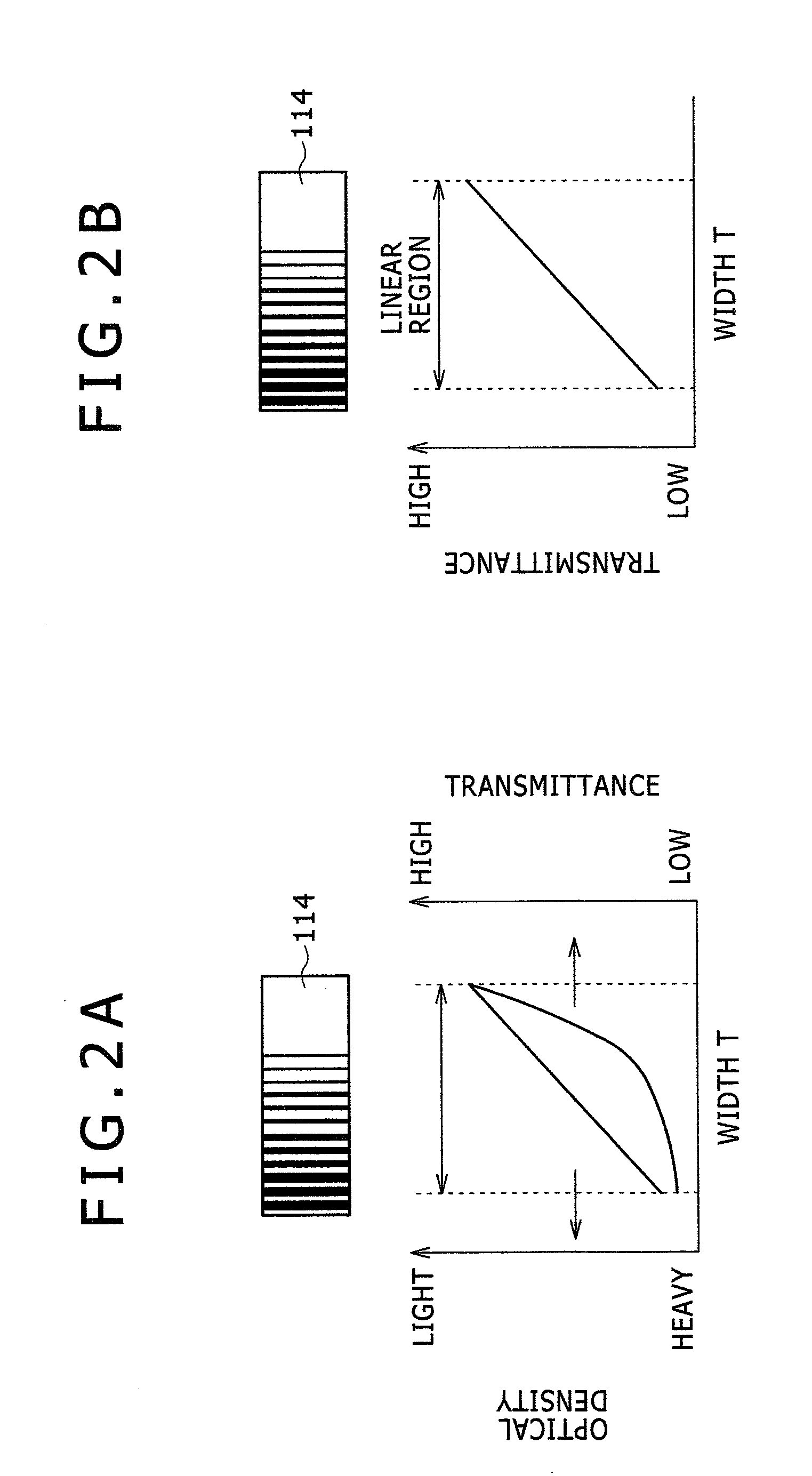Surface defect inspecting apparatus with defect detection optical system and defect-detected image processing
a defect detection and defect technology, applied in the direction of optically investigating flaws/contamination, measurement devices, instruments, etc., can solve the problems of disadvantageous requirements for circuits receiving signals from adjacent elements in the width direction of adjacent elements, and poor accuracy in terms of exact size and height of defects, etc., to achieve high accuracy
- Summary
- Abstract
- Description
- Claims
- Application Information
AI Technical Summary
Benefits of technology
Problems solved by technology
Method used
Image
Examples
Embodiment Construction
[0040]FIG. 1 illustrates a surface defect inspecting apparatus having a defect detection optical system and defect-detected image processing, which includes an irradiation optical system 200 that irradiates a light beam on a surface of a face plate of a disk 1 mounted on a stage 500 to scan the surface of the face plate, a light-receiving optical system 300 having shading filters 111 and 114 with shading differences causing an amount of specular reflection light from the face plate resulting from the light beam irradiated on the disk 1 to be changed and receiving the specular reflection light that has transmitted the shading filters, and a processing unit 400 that identifies defects on the surface of the face plate from the change in amount of specular reflection light that has transmitted the shading filters. Hereinafter, details of the respective constitutional components will be described with respective operations.
[0041]In the irradiation optical system 200, a laser beam output ...
PUM
| Property | Measurement | Unit |
|---|---|---|
| transmittance | aaaaa | aaaaa |
| transmittance | aaaaa | aaaaa |
| transmittance | aaaaa | aaaaa |
Abstract
Description
Claims
Application Information
 Login to View More
Login to View More - R&D
- Intellectual Property
- Life Sciences
- Materials
- Tech Scout
- Unparalleled Data Quality
- Higher Quality Content
- 60% Fewer Hallucinations
Browse by: Latest US Patents, China's latest patents, Technical Efficacy Thesaurus, Application Domain, Technology Topic, Popular Technical Reports.
© 2025 PatSnap. All rights reserved.Legal|Privacy policy|Modern Slavery Act Transparency Statement|Sitemap|About US| Contact US: help@patsnap.com



